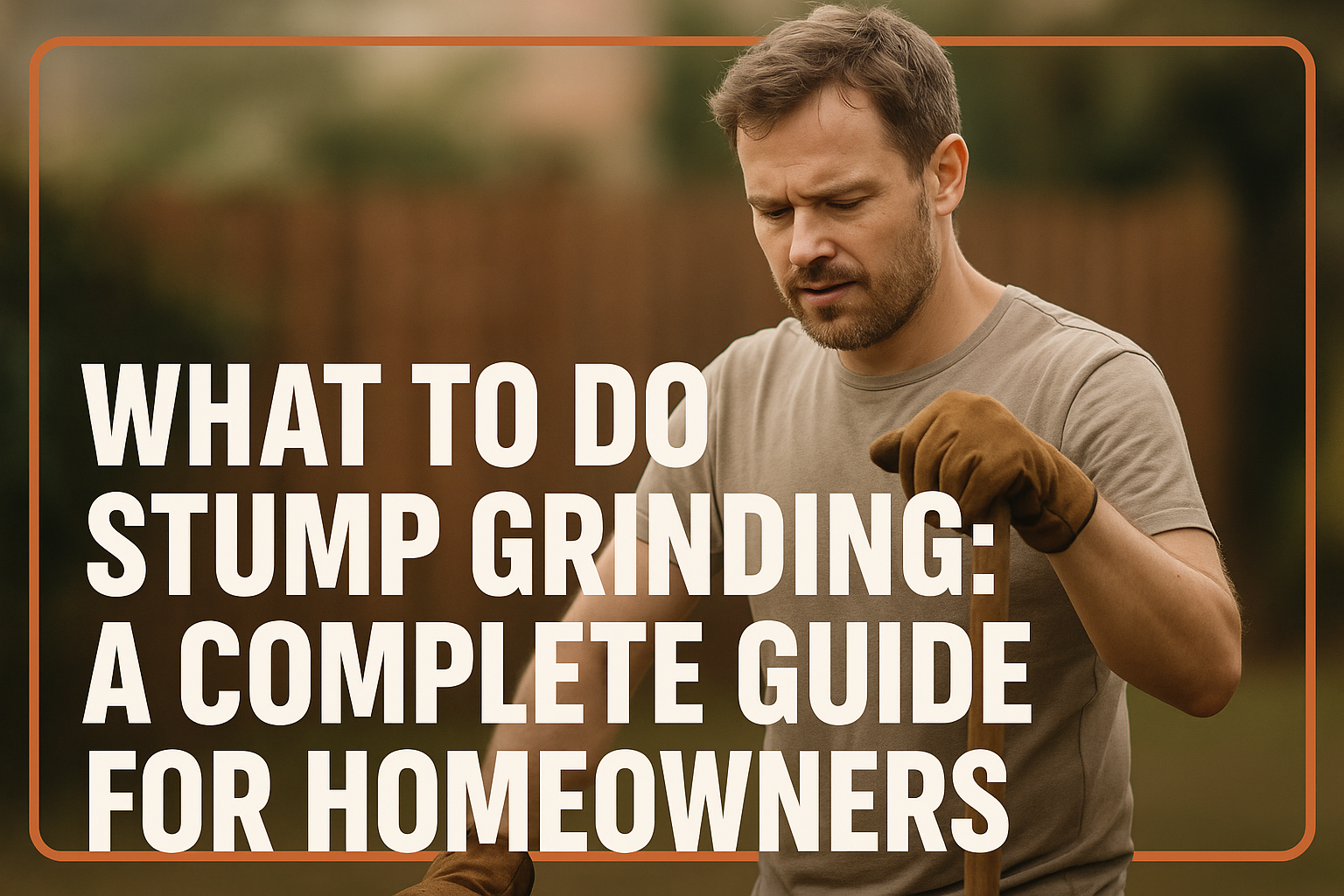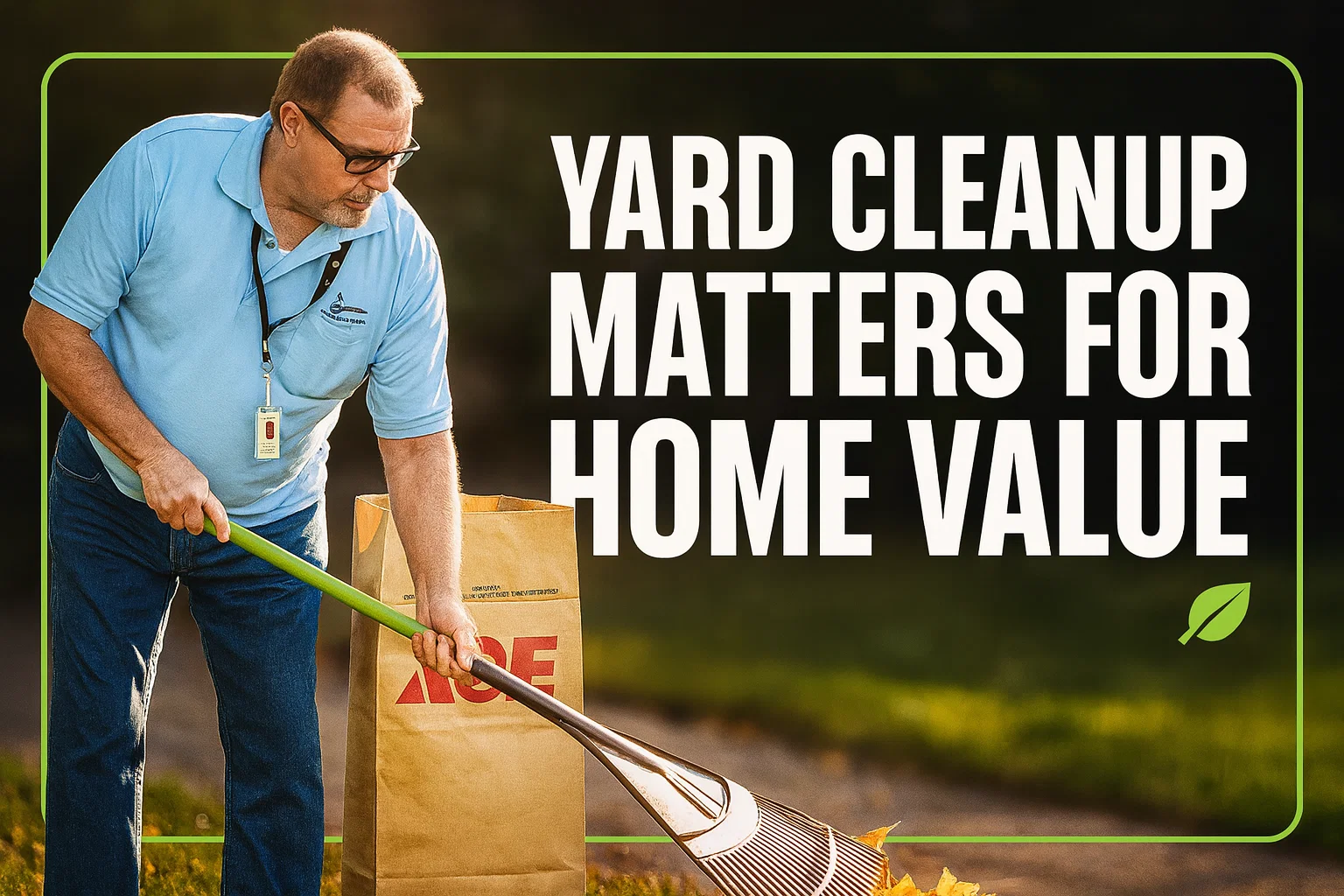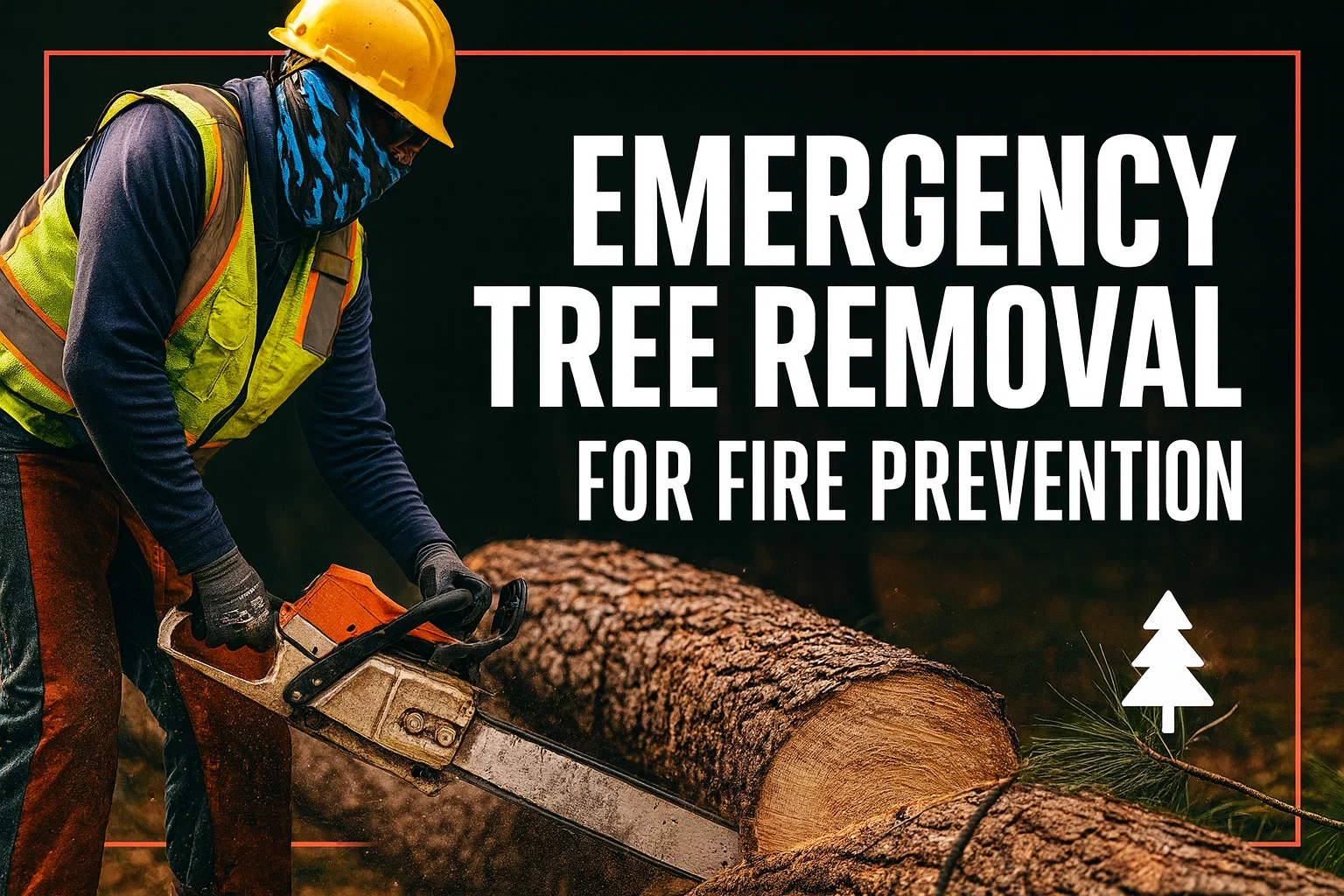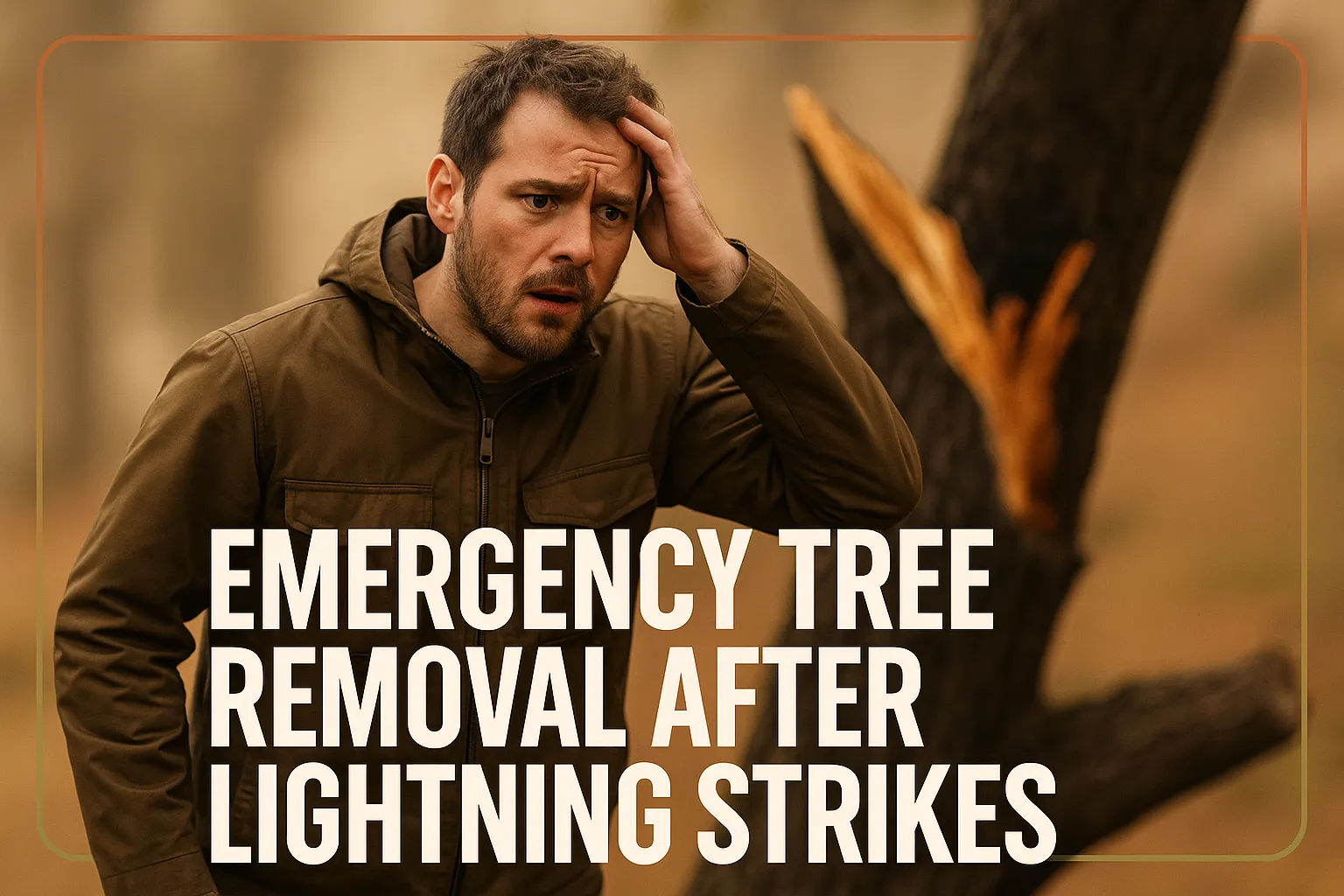Free the possibilities already there in your yard when that ugly tree stump is no longer there! It is like finishing the race when putting down the stump, but after it, you start to experience real magic. What you lay down next could be a beauty in the center of the garden or a fresh and green lawn that puts new life in your space. Ignoring the aftermath may result in uneven ground, inadequate plant growth, or a disordered yard. However, it is possible to have your yard turned around with the right steps in place in a way that it will be even better than you imagined. You have a dream in flowers, new grass, or artistic ornament; here you find it all. Give me a strip, change all the scenery. Here are the most intelligent, the least challenging types of solutions to take care of your yard with the stump grinding, and make the vision of your outside world true!
Understanding What Happens During and After Stump Grinding
Stump grinding is a safe method that removes the available tree stump by being ground right above and slightly just below ground level to produce small wood chips leaving the roots intact below the soil to decay naturally with time. This technique will be less disruptive to the soils as opposed to the total removal of stumps and will not alter the soil structure. A hole or a depression just a few inches deep where the stump used to be, and a heap of fine and coarse wood chips with bark on them, will be the results of grinding. The stump is a big and bulky fixation that is difficult to mow in the lawn and has pests before grinding. Once ground, one of the places, the area immediately becomes a smoother but often uneven hollow, which has been partly or wholly filled with the wood chips, but one will still need to have the ground recover quickly and be attended to, to regain the outlook of the lawn.
What to Do With Stump Grindings
Can You Use Stump Grindings as Mulch?
Stump grinding produces great natural mulch which can help your garden and prevent the development of weeds as well as aid in retaining soil moisture. Since they decompose with time, they are enriching the soil with precious organic matter. The fact, however, that these grindings are furnished by the very stump, leads to the fact that they, in some measure, provoke a temporary stalemate of the nitrogen in the soil, which, when resorted to in excessive amounts, may hinder the growth of plants.
How to Use Stump Grindings in the Garden
Stump grindings can be spread around flower beds or they can be placed under shrubs, thus they make mulch. They can also be used in combination with compost or soil when they are needed to help enrich the bed in the garden. It can also be used in stump grindings as the foundation of pathways or natural playgrounds, which offer a rustic and natural appearance and serve to cover the ground in a useful way.
When and Why to Remove Stump Grindings
It is advisable to remove stump grinding so that you can immediately plant grass because the wood chips may prevent the growth of seeds. Removal is also a possible option, in case you fear the nitrogen depletion because of the growth of your plants. The simplest cleanup processes would be the raking and moving of the grindings or the use of a leaf blower or a vacuum cleaner to clear the smaller pieces.
A combination of Stump Grindings with Dirt: Good or Bad?
Stump grindings mixed with soil can be excellent provided there is proper mixing of the mixture and time given to the mixture to decompose prior to plantation. This assists in enhancing the structure and fertility of soil in the long run. Nevertheless, fresh grindings should not be typically mixed directly to the soil into which sensitive plants are going to grow as this can hamper growth in the early stages as it will tie up the nitrogen.
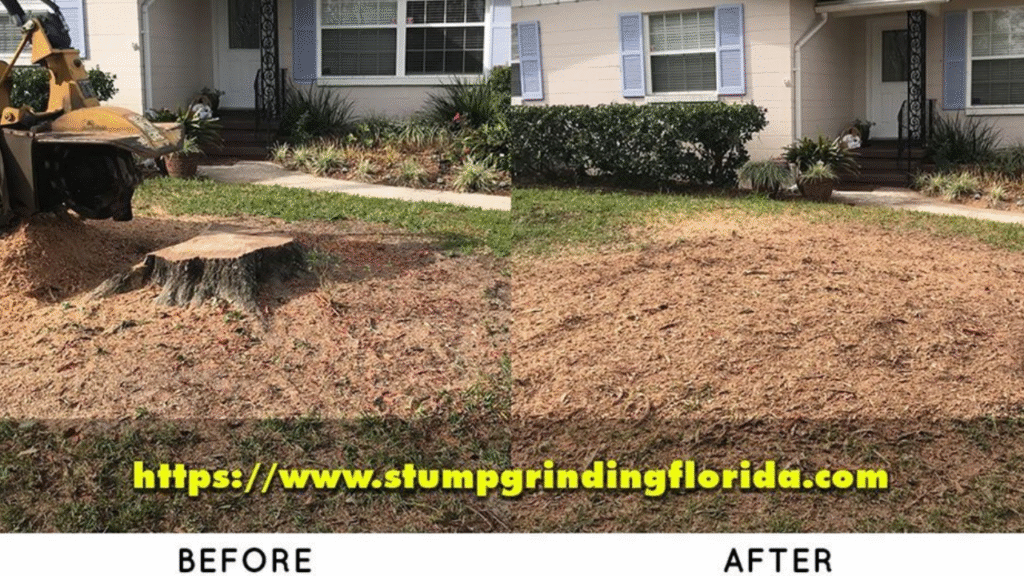
Lawn and Landscape Recovery After Stump Grinding
How to Repair Your Lawn After Stump Grinding
When trying to mend your lawn after stump grinding, the first thing that you should do is fill the hole that has been left behind with a blend of soil and compost. This assists in replenishing nutrient-enriched ground and healthy plants. Secondly, the area must be leveled to avoid pooling water as it can destroy young grass or vegetation. After the clearing is smooth, re-soil the place or place sod that suits your lawn so that there is a smooth appearance. Frequent watering is required to ensure that the grass roots and to damaged that no foot traffic and heavy equipment in the area will be taken, as the grass is growing to cover the roots to avoid soil compaction and damage.
How Soon Can You Plant After Grinding a Stump?
When you intend to plant grass, wait 1-3 weeks after texture stump grinding so that the dust may settle and the place tends to normal. In the case of other plants, particularly sensitive plants, they should wait a few months or work the soil deeply, according to the number of grindings remaining, and the action of decomposition, to have the most likelihood of a healthy growth.
Fixing Ground Sinking Where the Tree Was Removed
It is normal to have the ground sink after stump grinding since the roots in the ground deteriorate gradually, leaving space. To control this, soil should be added regularly to the sunken area and stamped to a certain level surface. It is wise to avoid using heavy machinery on the site until the ground has settled, as this will help avoid having uneven ground or compaction of the ground.
Advanced Stump Grinding Considerations
Stump and Root Grinding, What You Need to Know
Not only does drilling get rid of the visible portion of the stump, but it also aims at the roots at an underground level to ensure that the tree never grows back. Nevertheless, roots around buildings, like foundations or underground facilities, may not be an easy matter and may need the use of a professional to be removed to prevent any damage and ensure successful light elimination of root stumps.
What Happens to Roots After Stump Grinding?
After stump grinding, the left roots rot away in the course of months or even years. As this decay process takes place, the soil above the roots can be compacted or settled and this can at times lead to a slight sinking of the ground. The decomposition of the roots adds useful organic matter to the soil, which enhances the fertility of the soil and its productivity as time goes on.
Dealing With Large Stumps or Complex Root Systems
Big stumps or ones that have a large root system that is complicated may take more than one session of grinding to remove the stump. In other instances, complete removal of the stumps may be advised rather than grinding to prevent the spread of the roots. These situations are best left in the hands of professional stump grinding services, which can safely and efficiently take care of such situations, as they are hard to reach and may be near areas that are sensitive.
Conclusion
After stump grinding, your yard is primed for rejuvenation or creative projects. Whether you prefer quick lawn repair or designing a garden centerpiece, understanding the what to do after stump grinding helps you get the best results. Alexa’s Tree Services is here to assist every step of the way, from grinding to cleanup to landscaping advice!
Feel free to contact us to schedule your stump grinding or for personalized yard care tips.
FAQ’s
A: Yes. Filling prevents accidents, helps level the ground, and prepares the space for planting or lawn repair.
A: You can, especially if using it as mulch. However, if planting grass soon, removing or mixing them properly is advised.
A: Typically, several weeks to months, depending on root size, soil type, and weather conditions.
A: Grinding chips can sometimes be composted if mixed well but burning is often not recommended due to size and moisture content.

